Waac
As you have probably gathered, Chogan is not fond of waac—and with good reason. Waac, or rock tripe as we know it, has minimal nutritional value. People eat it as a last resort to prevent starvation. It was standard fare for some of Washington’s troops at Valley Forge. Botanists classify rock tripe as a lichen, which is a combination of algae and a fungus. The fungus provides structure and the algae provide nutrition from the sun using photosynthesis.
Smooth Rock Tripe
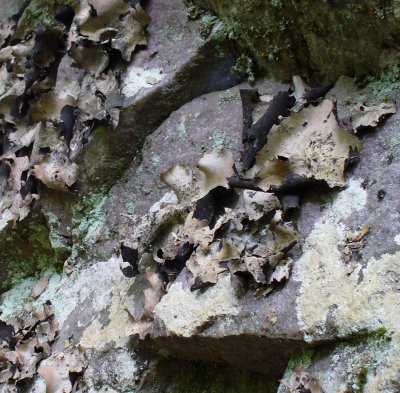
Smooth Rock Tripe (Umbilicaria mammulata) is the most common rock tripe in the mid-west and is usually found growing on the vertical surfaces of granite walls. During dry periods the underside of the lichen will be black and the outer surface brown. They will be thin and brittle, and the outer edges will curl up giving the appearance of potato chips glued to granite walls.
Rock Tripe Up Close
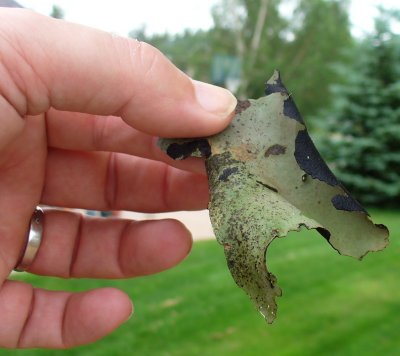
After a rain, the outer surface will turn light green like the lichen on the right and they become flexible and rubbery. These characteristics make rock tripe easy to identify since there are few similar plant species, but caution should always be used when ingesting non domesticated plants.
Gathering Rock Tripe
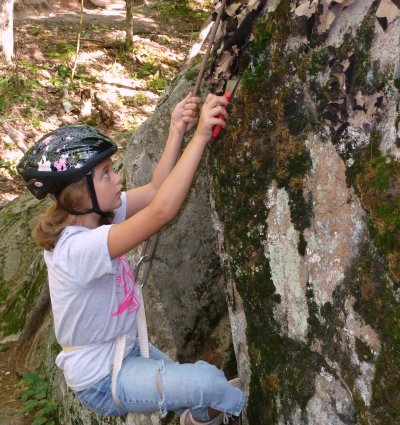
Animals frequently eat any rock tripe growing close to the ground leaving only the lichens near the top of cliffs. This does not deter Ali, who climbs after them. She slides her spatula under the lichen to sever the holdfast after which the rock tripe falls to the ground where Briqlie collects them.
Cleaning Rock Tripe
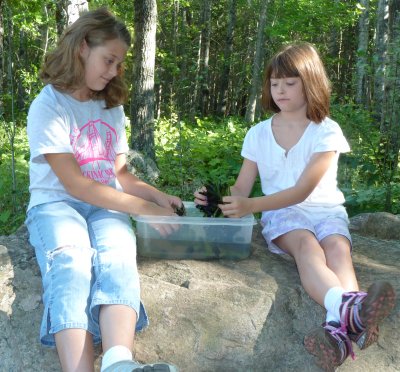
After Ali and Briqlie harvest the rock tripe the real work begins. They must scrape the holdfast of each lichen with a thumbnail to remove any grit or sand that may have pulled loose from the rock. Then they must soak the rock tripe in several changes of water to remove water-soluble toxins. If these toxins are not removed the rock tripe will have a bitter taste and could cause abdominal cramping and diarrhea.
Cooking Rock Tripe
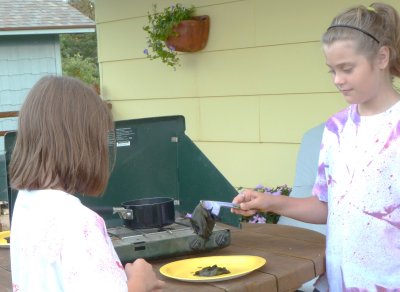
Boiling for over an hour (Native American style) transforms the rock tripe into a limp mass floating in a slimy broth. Both Ali and Briqlie refused to taste the concoction (citing child cruelty laws), forcing the author to make the supreme sacrifice. He found the texture disgusting and the taste lacking. Obviously, starvation favorably alters the taste buds. Deep frying rock tripe (Japanese style) and lightly dusting with salt produced a more palliative product with the texture and taste of a potato chip. Briqlie found that more to her liking.
Now you know why Chogan detests waac (rock tripe). Hopefully, they will find better food as their journey continues.
